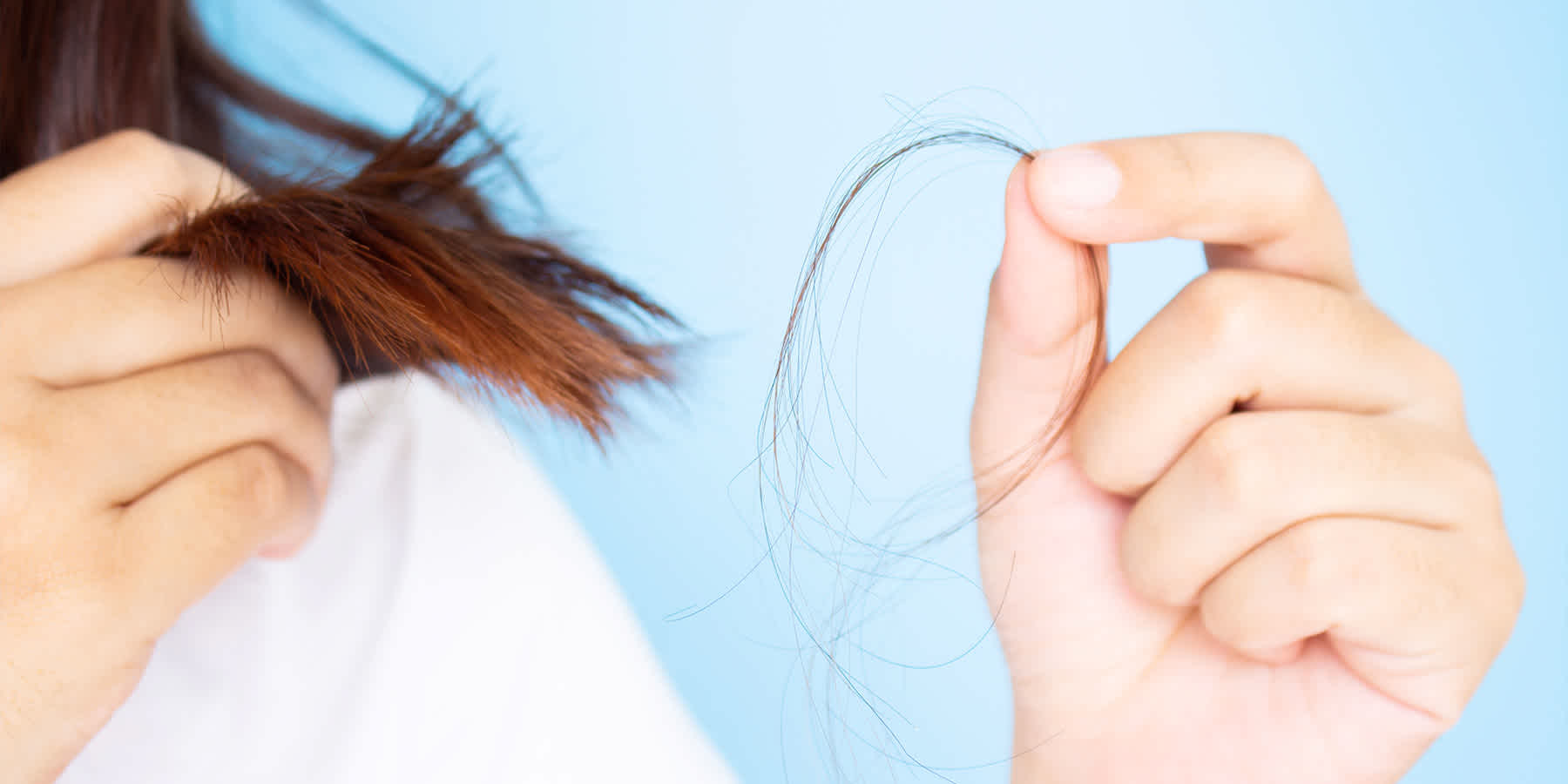
What Hormone Causes Hair Loss in Women?
Medically reviewed on February 15, 2022 by Jordan Stachel, M.S., RDN, CPT. Last updated on February 3, 2024. To give you technically accurate, evidence-based information, content published on the Everlywell blog is reviewed by credentialed professionals with expertise in medical and bioscience fields.
Table of contents
- Understanding the Hair Growth Cycle
- Female Pattern Baldness
- What Hormone Causes Hair Loss in Females?
- Treating Female Pattern Hair Loss
While hair loss is more common among men, women can also lose their hair for various reasons. About 50 percent of women experience some form of noticeable hair loss [1]. The most prominent is female pattern hair loss, affecting approximately one-third of women in the U.S. Like male pattern baldness, female pattern hair loss is typically caused by a hormonal imbalance. Learn more about what causes hair loss in women and try our available hormone test to see where your hormone levels are.
Understanding the Hair Growth Cycle
Generally, the average adult human loses about 50 to 100 strands of hair per day [1]. That's a natural part of a healthy hair cycle. Some hairs fall out while others grow. The anagen phase is the active growth period when new hairs grow from their follicles. Next, the hair continues its growth cycle while the root of the hair gradually detaches from the hair follicle. Lastly, during the telogen phase, the hair has stopped its growth and eventually gets shed [2].
For those with female pattern hair loss (also androgenetic alopecia or androgenic alopecia), the anagen phase gets shorter and shorter while the telogen phase gets longer. Eventually, there are no new hairs to replace those that have fallen out [2].
Female Pattern Baldness
Female hair loss can look a lot different than male hair loss. In men, male pattern baldness typically starts at the crown (the top of the head) and the temples. Eventually, the balding at the top of the head meets the receding hairline, resulting in the characteristic horseshoe-like pattern around the sides and the back of the head [2].
In women, hair loss more often manifests as patches of thinning hair all over the scalp. This means, while there is typically no receding hairline, hair thinning is more extensive [2].
What Hormone Causes Hair Loss in Females?
As with male pattern baldness, female pattern baldness comes from hormone imbalances, specifically dihydrotestosterone imbalances, or DHT. This hormone is similar in structure to testosterone, but it is significantly more potent [3].
DHT can attach to receptors on the hair follicles, causing the follicles to shrink. As the follicles shrink, they cannot support hair growth, disrupting the hair cycle and contributing to hair loss. This effect becomes more severe as the DHT levels increase [3].
This increase in DHT can potentially come from other things that affect hormonal balance, including menopause, stress, and/or underlying thyroid hormone issues [3].
's important to understand an important factor is genetic sensitivity to DHT. Some people have high DHT but do not experience hormone-related hair loss. Others may have minimal DHT levels and still experience hair loss [3].
Female Pattern Hair Loss Treatment
The good news is that female pattern hair loss can be treated. Minoxidil is the most common treatment for hair loss in various forms. Initially developed as a treatment for high blood pressure, minoxidil works by stimulating blood flow to the hair, which may support hair regrowth [3].
To specifically address excess DHT, your healthcare provider may also prescribe anti-androgen medication. Anti-androgen medication inhibits the excess production of androgens, like testosterone. With reduced testosterone levels, the body can't produce as much DHT – which may help with hair restoration [2].
It may also help get a better overall view of your hormonal balance. The Everlywell Women’s Health Test measures ten essential hormones, including free testosterone, estradiol, and progesterone. Hair loss can be a taxing ordeal that can make many people self-conscious about appearance and/or feel embarrassed to be out in public. If you experience hair loss or other health issues, consider asking your healthcare provider for potential solutions.
For more information on a women’s health exam and/or how to balance hormones, visit Everlywell today.
Related content
What is a women's health exam?
References
- Hair Loss in Women. Cleveland Clinic. Medical Citation URL. Updated February 10, 2021. Accessed February 2, 2024.
- Female Pattern Baldness. Cleveland Clinic. Medical Citation URL. Updated May 3, 2023. Accessed February 2, 2024.
- DHTS - Overview: Dihydrotestosterone, Serum. Mayo Clinic. Medical Citation URL. Accessed February 2, 2024.
Jordan Stachel, M.S., RDN, CPT is most fulfilled when guiding others towards making stepwise, sustainable changes that add up to big results over time. Jordan works with a wide variety of individuals, ranging in age from children to the elderly, with an assortment of concerns and clinical conditions, and has written for publications such as Innerbody. She helps individuals optimize overall health and/or manage disease states using personalized medical nutrition therapy techniques.
